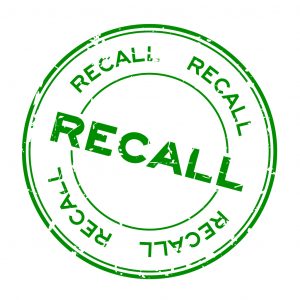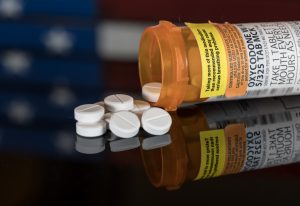 In the last few years, the video game industry has been hit with lawsuits accusing certain games of fostering addictive behaviors, especially among younger players. These lawsuits often cite features like loot boxes, microtransactions, and reward systems, which are designed to enhance player engagement, as in-game mechanisms that push players toward compulsive play and psychological harm. Plaintiffs claim that game developers either knew or should have known about these potential risks and failed to mitigate them.
In the last few years, the video game industry has been hit with lawsuits accusing certain games of fostering addictive behaviors, especially among younger players. These lawsuits often cite features like loot boxes, microtransactions, and reward systems, which are designed to enhance player engagement, as in-game mechanisms that push players toward compulsive play and psychological harm. Plaintiffs claim that game developers either knew or should have known about these potential risks and failed to mitigate them.
Articles Posted in Products Liability
Follow the Leader: How Ambiguities in Excess Follow-Form Policies Can Lead Policyholders Down a Crooked Path
 A feature of most corporate liability insurance programs is the tower system of coverage: a primary policy with several overlying excess policies stacked atop one another collectively providing coverage up to a desired (or available) limit of liability. Depending on the size and liability exposures of a policyholder, a tower can consist of dozens of policies providing limits totaling hundreds of millions of dollars. Adding to this complexity, excess policies often share layers of coverage in quota share arrangements, sometimes subscribing to the same policy but more often issuing separate policies for a stated percentage of the quota share whole. To avoid as much as possible an impenetrable web of conflicting coverage terms, excess policies often “follow form” to the underlying coverage (usually to the primary policy) providing the insurer certainty and providing the policyholder a consistent tower of coverage. It is not always possible, though, to obtain clarity and certainty in tower placements. Insurance companies issuing excess coverage may not wish to agree to all the terms included in the underlying policies, and so may offer additional or differing terms, creating inconsistencies in an otherwise monolithic tower. For example, a primary insurer may refuse to cover punitive damages whereas an excess insurer may agree to do so, or vice versa.
A feature of most corporate liability insurance programs is the tower system of coverage: a primary policy with several overlying excess policies stacked atop one another collectively providing coverage up to a desired (or available) limit of liability. Depending on the size and liability exposures of a policyholder, a tower can consist of dozens of policies providing limits totaling hundreds of millions of dollars. Adding to this complexity, excess policies often share layers of coverage in quota share arrangements, sometimes subscribing to the same policy but more often issuing separate policies for a stated percentage of the quota share whole. To avoid as much as possible an impenetrable web of conflicting coverage terms, excess policies often “follow form” to the underlying coverage (usually to the primary policy) providing the insurer certainty and providing the policyholder a consistent tower of coverage. It is not always possible, though, to obtain clarity and certainty in tower placements. Insurance companies issuing excess coverage may not wish to agree to all the terms included in the underlying policies, and so may offer additional or differing terms, creating inconsistencies in an otherwise monolithic tower. For example, a primary insurer may refuse to cover punitive damages whereas an excess insurer may agree to do so, or vice versa.
Insurance Considerations for Cannabis Delivery Services
 The legal cannabis industry in the U.S. is growing at an unprecedented rate and is projected to reach $73.6 billion by 2027. While federal law still classifies marijuana as a Schedule I drug, many states have legalized both medical and recreational marijuana. As state restrictions ease, new business opportunities continue to emerge.
The legal cannabis industry in the U.S. is growing at an unprecedented rate and is projected to reach $73.6 billion by 2027. While federal law still classifies marijuana as a Schedule I drug, many states have legalized both medical and recreational marijuana. As state restrictions ease, new business opportunities continue to emerge.
Pillsbury Insurance Insolvency Watch: Legacy U.S. and London Insurers Set Claims Bar Dates for Policyholders
 In recent weeks, two insurers with significant legacies of occurrence-based general liability coverage took important steps to liquidate their estates.
In recent weeks, two insurers with significant legacies of occurrence-based general liability coverage took important steps to liquidate their estates.
Bedivere Insurance Company (OneBeacon) Liquidation
The first insurers are associated with Bedivere Insurance Company, formerly known as OneBeacon Insurance Company (OBIC). OBIC’s history stretches back to the 1800s but is most well known as the successor to the General Accident and Commercial Union families of insurers. These companies wrote many policies from the 1960s through the 2000s and include Commercial Union Assurance Company, Employers Commercial Union Insurance Company, Employers’ Surplus Lines Insurance Company, Employers’ Liability Assurance Corporation Limited, General Accident Insurance Company, and CGU Insurance Company (and many other smaller companies). OBIC stopped writing new business in 2010 and entered run-off, paying claims from its historic exposures. In 2014, OneBeacon Group, OBIC’s parent, sold its run-off business to a Bermuda entity called Armour Group. The transaction included OBIC and other subsidiaries (Potomac Insurance Company, OneBeacon America Insurance Company, and The Employers Fire Insurance Company). OBIC changed its name to Bedivere Insurance Company in 2015, and in October 2020, absorbed its subsidiaries by merger.
Product Liability Risks in the Evolving Cannabis Industry
 Cannabis is now fully legal in ten states plus the District of Columbia, and medical marijuana is legal in 23 states. Despite growing acceptance among states, cannabis remains illegal federally under the Controlled Substances Act of 1970 as a Schedule 1 substance, which has made oversight and regulation of the industry decentralized and in some instances non-existent. The psychoactive effects of cannabis, coupled with limited regulation, imposes increased risk of product liability claims. To mitigate this risk, industry members should take steps to self-regulate.
Cannabis is now fully legal in ten states plus the District of Columbia, and medical marijuana is legal in 23 states. Despite growing acceptance among states, cannabis remains illegal federally under the Controlled Substances Act of 1970 as a Schedule 1 substance, which has made oversight and regulation of the industry decentralized and in some instances non-existent. The psychoactive effects of cannabis, coupled with limited regulation, imposes increased risk of product liability claims. To mitigate this risk, industry members should take steps to self-regulate.
Artificial Intelligence: A Grayish Area for Insurance Coverage
 Artificial Intelligence (AI) is a hot topic in industries from manufacturing to the medical profession. Developments in the last ten years have delivered AI technology, once a fiction reserved for the movies, to private corporations and even to everyday homes. Examples include:
Artificial Intelligence (AI) is a hot topic in industries from manufacturing to the medical profession. Developments in the last ten years have delivered AI technology, once a fiction reserved for the movies, to private corporations and even to everyday homes. Examples include:
- 2004 Defense Advanced Research Projects Agency (DARPA) sponsors a driverless car grand challenge. Technology developed by the participants eventually allows Google to develop a driverless automobile and modify existing transportation laws.
- 2005 Honda’s ASIMO humanoid robot can walk as fast as a human, delivering trays to customers in a restaurant setting. The same technology is now used in military robots.
- 2011 IBM’s Watson wins Jeopardy against top human champions. It is training to provide medical advice to doctors. It can master any domain of knowledge.
- 2012 Google releases its Knowledge Graph, a semantic search knowledge base, likely to be the first step toward true artificial intelligence.
- 2013 BRAIN initiative aimed at reverse engineering the human brain receives $3 billion in funding by the White House, following an earlier billion euro European initiative to accomplish the same.
- 2014 Chatbot convinced 33% of the judges it was human and by doing so passed a restricted version of a Turing Test.
As Opioid Liability Claims Expand Across the Industry, Consider Your Insurance Coverage
Regular readers of the Policyholder Pulse know that we often frame coverage issues with a lighthearted or (hopefully) humorous theme, but there’s nothing funny about the opioid crisis that  continues to devastate lives and communities across the United States. The extent and impact of opioid addiction are being examined and explained by experts in the field, and we aren’t trying to tackle that subject on an insurance blog. Instead, this post outlines the expanding breadth of opioid liability claims at every level of the industry, and insurance coverage considerations raised by these claims.
continues to devastate lives and communities across the United States. The extent and impact of opioid addiction are being examined and explained by experts in the field, and we aren’t trying to tackle that subject on an insurance blog. Instead, this post outlines the expanding breadth of opioid liability claims at every level of the industry, and insurance coverage considerations raised by these claims.
Riddell, Inc. v. Superior Court: Insurers Flagged for Unsportsmanlike Conduct
 California law has long held that an insurer may not use declaratory relief or other tactics to prejudice the defense of its policyholder in an underlying lawsuit. But in their zeal to avoid coverage, and despite California Supreme Court precedent, insurers sometimes employ tactics that actually increase their policyholder’s risk of liability in the underlying action, contrary to the very purpose of liability insurance. That was the case in the coverage action between football helmet manufacturer Riddell and its liability insurers, which is pending in California state court, where certain London Market Insurers tried to require the production of extensive discovery before that substantially identical production took place in the underlying product liability action.
California law has long held that an insurer may not use declaratory relief or other tactics to prejudice the defense of its policyholder in an underlying lawsuit. But in their zeal to avoid coverage, and despite California Supreme Court precedent, insurers sometimes employ tactics that actually increase their policyholder’s risk of liability in the underlying action, contrary to the very purpose of liability insurance. That was the case in the coverage action between football helmet manufacturer Riddell and its liability insurers, which is pending in California state court, where certain London Market Insurers tried to require the production of extensive discovery before that substantially identical production took place in the underlying product liability action.
Total Recall: Maximizing the Return on Product Recall/Contamination Insurance
 If you believe the news, I may be lucky to make it out of the driveway alive on my morning commute tomorrow. That microwave-ready triple egg breakfast sausage sandwich I stuff into an increasingly jowly face on my way to the car? Recalled. The overpriced technology-assisted car that practically backs itself out of the driveway as I struggle to wipe away the remnants of my savory breakfast? Recalled. Each morning brings fresh product recall announcements involving everything from contaminated sunflower seeds to exploding toilets. This year contamination recalls in Food and Drug Administration (FDA) regulated industries alone rose 167% from the first quarter to the second quarter. The exponential rise of product recalls stems from a convergence of factors, including increased governmental regulation and more extensive and technologically sophisticated testing of products.
If you believe the news, I may be lucky to make it out of the driveway alive on my morning commute tomorrow. That microwave-ready triple egg breakfast sausage sandwich I stuff into an increasingly jowly face on my way to the car? Recalled. The overpriced technology-assisted car that practically backs itself out of the driveway as I struggle to wipe away the remnants of my savory breakfast? Recalled. Each morning brings fresh product recall announcements involving everything from contaminated sunflower seeds to exploding toilets. This year contamination recalls in Food and Drug Administration (FDA) regulated industries alone rose 167% from the first quarter to the second quarter. The exponential rise of product recalls stems from a convergence of factors, including increased governmental regulation and more extensive and technologically sophisticated testing of products.
Robot Take the Wheel: Insurance Implications of Autonomous Vehicles
The era of the self-driving car has arrived, with the shiny promise of fewer auto collisions—and the inevitable potholes of a transformative technology. Despite the significant concerns raised by a recent accident involving a driver’s reliance on  a partially autonomous automatic braking and steering system on the Tesla Model S—one of 70,000 such vehicles now on the roads—the auto industry is roaring ahead with autonomous vehicles (AVs). Google is testing its driverless cars extensively on U.S. roads; General Motors has teamed up with car-sharing company Lyft to develop a driverless taxi service; and most major automakers will be releasing fully or partially autonomous vehicles in the next five years.
a partially autonomous automatic braking and steering system on the Tesla Model S—one of 70,000 such vehicles now on the roads—the auto industry is roaring ahead with autonomous vehicles (AVs). Google is testing its driverless cars extensively on U.S. roads; General Motors has teamed up with car-sharing company Lyft to develop a driverless taxi service; and most major automakers will be releasing fully or partially autonomous vehicles in the next five years.
 Policyholder Pulse
Policyholder Pulse


